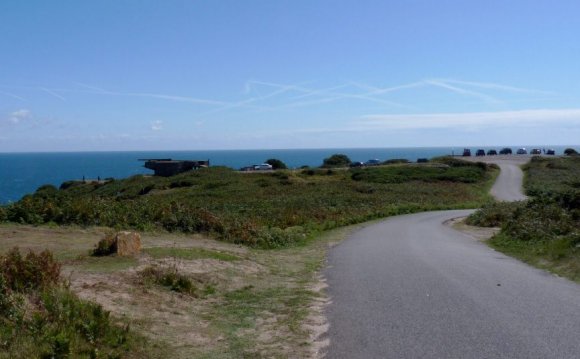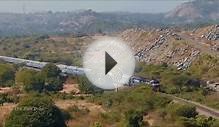
Available languages — OpenRailwayMap
Permissible speeds at the Stuttgart Main station, including its surrounding light rail tracks. OpenRailwayMap maxspeed data is put as an overlay on top of on a pre-installed offline map in OsmAnd (see three easy steps to do that). A map section showing the northern and of the Nürnberg–Munich high-speed line, including track types, station names, track numbers and milestones (as of April 2014)OpenRailwayMap (previously called "Bahnkarte") is a detailed online map of the world's railway infrastructure, built on OpenStreetMap data. It has been available since mid-2013 at openrailwaymap.org.
Description
Some railways in the greater Stuttgart area (on a mobile phone)This project was founded in December 2011 in order to create a world-wide, open, up-to-date and detailed map of the railway network, based on OpenStreetMap. The domain was registered on April 27th, 2013 and the corresponding website was launched in mid 2013. Since then it has received constant improvement. In February 2014 the project moved to was launched.
The OpenRailwayMap includes all rail-mounted and automotive vehicles, e.g. railways, subways, trams, miniature railways and funiculars. The map does not include aerialways, monorails, and maglevs.
The name OpenRailwayMap mostly refers to the online map, but the project also aims to support railroad-related data in OpenStreetMap. By developing a consistent data model, providing a mailing list for discussions, developing editor plugins, etc. the collection of this data is boosted and the data is made usable for other applications and developers.
Motivation
OpenRailwayMap aims to provide a new quality of railway maps and offers the following benefits:
- Worldwide coverage: So far, there is no railway map covering the whole world, just single countries.
- Open source and open data: Currently there are also no maps of railway networks, who supply not just rendered maps, but also the raw geodata. All current maps do not offer such data under free licenses. This project is based on OpenStreetMap data which is published under the Open Database License.
- Up-to-date and detailed: This map aims to profit from crowdsourcing. Lots of people around the world with a good local knowledge can edit this map to make it detailed and already up-to-date.
- OpenStreetMap: There are already many maps based on OpenStreetMap, e.g. for sailing, cycling, hiking, motorcars, public transport, skiing, power networks and many more. However, there is no railroad map so far.
Use cases
There are several good reasons for creating an open, comprehensive railway map of the world. Just some just cases:
- Simulation: Detailed railroad data is an excellent source for simulating trains and signal boxes realisticly.
- Research: Scientists and researchers can use the data to analyse the railroad network, simulate changes and use it for educational purposes.
- Plans for model trains: This detailed railroad data is a good data source for railway enthusiasts, who want to build a railroad line as a model. With this data you do not need to record the railroad tracks anymore.
- Enthusiasts: There are many people interested in railways, e.g. trainspotters. For those people this map provides a detailed information source of the railroad network.
- Basemap for realtime traffic: Other applications can use this map to track the position of trains or to provide a realtime view of the trains' current position. You can also think of applications showing construction sites, detours, blockings and the traffic density.
- Routing: With a detailed mapped railway infrastructure you could develop a routing application.
- Public transport: This map and the data are an important data source for public transport applications like timetables, routing... .
Mapping
For the average mapper mapping the railroad network is a bit more complicated than mapping streets or POIs, but there are some suitable ways of mapping:
- Aerial imagery: Railroad tracks can easily be drawn based on aerial imagery, if high-resolution images are available for your area. With those imagery you can map even great yards simply from home. If you have access to very good high-resolution imagery (e.g. Aerowest), you can also see platforms or even signals.
- In trains: In areas without high-resolution aerial imagery you can track the railroad lines with the GPS while sitting in the train. You should give attention to a sufficient GPS signal in the train to generate exact tracks (see WikiProject_Germany/Railway).
- Along the railroad lines: Especially in rural areas the railroad lines can be accessed easily from ways parallel to the tracks. From there you can map signals or milestones fast, easy and safe. Crossings and bridges are also a good possibility to have a look at a part of the railroad line.
- Stations: In stations you can map a lot of details without risk and easy to access.
- Other sources: Public data, data sources with usage permission, use pictures from trainspotters or videos from the driver's cab after getting their permission,
Note: In all ways of mapping, you have to respect some rules:
- Don't violate general laws: Don't enter railroad areas without permission, don't interrupt the railroad traffic... . Use just data you can get from public location (examples are mentioned some lines before)
- Don't put yourself at risk
- Don't use illegal, non-public, confidential or legally doubtful data sources
- Don't violate copyright laws and don't copy from other maps
For newbies: You can donate data, but do not know, how to get into OSM? You have interesting information you can share, but no time to do this yourself? and send your data with a permission so that we might be able do some mapping for you.
Features
A map of permissible speeds with hillshadesRELATED VIDEO












